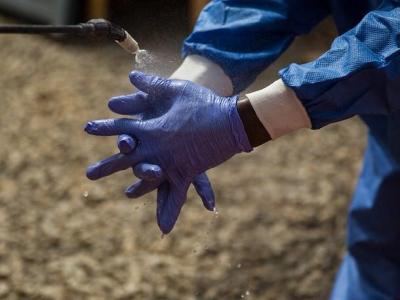Flu activity in the United States has increased slightly, with one key marker rising above the national baseline for the first time this season, the US Centers for Disease Control and Prevention (CDC) said today.
The flu season in the United States, as well as in many other Northern Hemisphere countries, is off to a slow start this year. The CDC says yearly flu activity is notoriously unpredictable, with outbreaks that can begin as early as October and lasting as late as May.
Few hotspots
The CDC's report for the week ending Dec 19 said at the national level, the percentage of clinic visits for flu rose to 2.2%, putting it above the national baseline of 2.1% and reflecting a slight increase from 1.9% the week before. Four of the CDC's 10 regions are above their region-specific baselines.
South Carolina was the only state ranked as high for flu activity as indicated by clinic visits for flu. Puerto Rico, New Jersey, and Texas registered moderate flu activity, with New York City, Alabama, Georgia, and Virginia experiencing low flu activity.
In terms of geographic spread, no states or territories reported widespread flu. Regional activity was reported by Puerto Rico, Guam, and five states: Kentucky, Maryland, Minnesota, North Carolina, and Pennsylvania.
Watching other markers
Meanwhile, the percentage of respiratory specimens that were positive for flu remained low, at 2.9%, the CDC said. The 2009 H1N1 virus was the predominant virus during the most recent surveillance week, though H3N2 is still being detected. Of 43 type A viruses for the week, 23 (54%) were H1N1, 6 (14%) were H3N2, and 6 (14%) were not subtyped. For the season so far, H3N2 has made up about 68% of influenza A viruses sampled.
According to results last week from public health labs, 78.2% of viruses tested in the most recent week were influenza A, while 21.8% were influenza B. Those percentages are almost identical for the season as a whole.
One more pediatric flu death was reported, raising the season's total so far to four. Overall, deaths from pneumonia and flu were 6.3%, keeping them below the epidemic threshold of 6.8%.
Pandemic flu stockpile questions
In other flu-related developments, a US House of Representatives committee recently sent a letter to Nicole Lurie, MD, MPH, head of the US Department of Health and Human Services Office of the Assistant Secretary for Preparedness and Response, asking for tests results of stockpiled pandemic flu vaccines.
The committee asked for the Biomedical Research and Development Authority (BARDA) to share results of current testing of the adequacy of the vaccines. According to a Dec 23 press release from the House Energy and Commerce Committee, the request is a follow-up to a Nov 19 hearing to investigate the nation's preparedness for seasonal flu.
The legislators have questioned whether the stockpiled vaccine would protect against newly emerging strains, such as a highly pathogenic H5N2 type that hit the poultry in several US states. The strain isn't known to infect people, but health officials have been monitoring the situation.
Legislators also raised concerns about whether BARDA is budgeting enough each year to replenish and maintain stockpiled pandemic flu vaccine.
See also:
Dec 28 CDC Flu View report
Dec 23 House committee press release



















